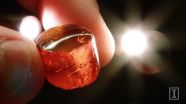(Press-News.org) (PHILADELPHIA) – Up to 20 percent of Parkinson's disease (PD) patients and their families may confront a common but largely unrecognized challenge: the occurrence of impulse control disorders (ICDs) such as compulsive gambling, sexual behavior, eating, or spending. Yet the presence of PD in these patients can severely limit or complicate treatment options. A team of investigators from the Perelman School of Medicine at the University of Pennsylvania and the Parkinson's Disease Research, Education and Clinical Center (PADRECC) at the Philadelphia Veterans Affairs Medical Center conducted a pilot study and found that the opioid antagonist naltrexone may be an effective treatment for diminishing ICD symptoms in PD patients. The results were published in the journal Neurology.
Researchers believe that these issues may arise as a result of medications used to treat the disease, but also could be a result of the disease itself, or a combination of both. ICDs can create financial, personal, employment, and social problems that add to the burden on patients and caregivers whose lives are already devastated by PD.
A sample of 50 PD patients, all of whom began displaying their ICD symptoms after both the onset of PD and the initiation of dopamine agonist treatment (which was continued normally during the course of the study) were placed on a placebo-controlled flexible dose of naltrexone, 50-100 mg/day.
Naltrexone was FDA approved for the treatment of alcohol dependence in 1994. Since then, a number of studies have confirmed its efficacy in reducing frequency and severity of relapse to drinking. It is less commonly used in the treatment of opioid addiction and rapid detoxification.
Patients were assessed by several evaluation measures, chiefly the Clinical Global Impression-Change (CGI-C), which was completed by a clinician, and the Questionnaire for Impulsive-Compulsive Disorders in Parkinson's Disease-Rating Scale (QUIP-RS), developed by the research team and completed by the patient. Several other assessment tools were used to evaluate PD symptoms and other psychological responses.
The outcome of the eight-week study was not definitive, reports lead author Daniel Weintraub, MD, an assistant professor of Psychiatry and a Fellow in Penn's Institute on Aging. "On the primary outcome measure (the CGI-C), we did not see a benefit in terms of the medication," he says. However, on the secondary measure (the QUIP-RS), "we did see a benefit of treatment, suggesting at least on a self-rated measure of ICD severity that naltrexone did help diminish the severity of ICD symptoms in PD patients."
Weintraub explains, "The interesting thing is that ICDs may not be specific to PD at all, but only to the medication which happens to be used primarily in PD patients. It may not be a disease effect as opposed to just excessive dopamine stimulation of a particular type. These PD medications are very potent medications for the D2 subset of dopamine receptors in the brain, and it seems that if you stimulate or overstimulate those, people may develop these problems whether or not they have PD."
Weintraub and his colleagues believe that the small size of the study and the inherent differences in interpreting an outcome measure based on a global rating such as the CGI-C compared to a continuous measure of symptom severity such as the QUIP-RS may limit their results.
Weintraub says this pilot study is a promising first step in identifying ICD treatments for PD patients, and potentially, improving their quality of life. "It shows that it is possible to do a randomized controlled trial for this problem in PD, which is an important point," he notes. "It shows that you have to think carefully about the primary outcome measures. And I think it supports further study of medications like naltrexone and other opioid antagonists with a larger, more definitive clinical trial."
INFORMATION:
This study was funded by a Clinical Intervention Award from the Michael J. Fox Foundation for Parkinson's Research (D.W., NCT1052831).
Additional Penn authors include Kimberly Papay, BS, department of Psychiatry; Sharon X. Xie, PhD, department of Biostatistics and Epidemiology; Matthew Stern, MD, department of Neurology; Howard Hurtig, MD, department of Neurology; John E. Duda, MD, department of Neurology, Parkinson's Disease Research, Education and Clinical Center (PADRECC), Philadelphia Veterans Affairs Medical Center; and James Minger, BA, department of Neurology.
Penn Medicine is one of the world's leading academic medical centers, dedicated to the related missions of medical education, biomedical research, and excellence in patient care. Penn Medicine consists of the Raymond and Ruth Perelman School of Medicine at the University of Pennsylvania (founded in 1765 as the nation's first medical school) and the University of Pennsylvania Health System, which together form a $4.3 billion enterprise.
The Perelman School of Medicine has been ranked among the top five medical schools in the United States for the past 17 years, according to U.S. News & World Report's survey of research-oriented medical schools. The School is consistently among the nation's top recipients of funding from the National Institutes of Health, with $392 million awarded in the 2013 fiscal year.
The University of Pennsylvania Health System's patient care facilities include: The Hospital of the University of Pennsylvania -- recognized as one of the nation's top "Honor Roll" hospitals by U.S. News & World Report; Penn Presbyterian Medical Center; Chester County Hospital; Penn Wissahickon Hospice; and Pennsylvania Hospital -- the nation's first hospital, founded in 1751. Additional affiliated inpatient care facilities and services throughout the Philadelphia region include Chestnut Hill Hospital and Good Shepherd Penn Partners, a partnership between Good Shepherd Rehabilitation Network and Penn Medicine.
Penn Medicine is committed to improving lives and health through a variety of community-based programs and activities. In fiscal year 2013, Penn Medicine provided $814 million to benefit our community.
Penn researchers: Naltrexone may diminish impulse control disorders in Parkinson's disease patients
2014-07-30
ELSE PRESS RELEASES FROM THIS DATE:
Study: Telephone support program beneficial for caregivers of those with dementia
2014-07-30
PROVIDENCE, R.I. – Rhode Island Hospital researchers have found that a support program administered entirely by telephone can significantly reduce depression and other symptoms in informal caregivers, such as family or friends, of individuals with dementia. The study is published online in advance of print in the journal Alzheimer's & Dementia.
"Those caring for people with Alzheimer's disease or other forms of dementia are often under a great deal of pressure," said principal investigator Geoffrey Tremont, Ph.D, of the division of neuropsychology in the department of ...
Supportive moms and sisters boost female baboon's rank
2014-07-30
DURHAM, N.C. -- A study of dominance in female baboons suggests that the route to a higher rank is to maintain close ties with mom, and to have lots of supportive sisters.
A female baboon's social status is dictated not by size or strength, but by the rank of her mother -– the higher the mother is ranked, the higher-ranked her daughter will be. For this reason, dominance rank in female baboons is thought to be determined at birth. Females born to high-ranking mothers are guaranteed a good spot in the pecking order, whereas females born to low-ranking mothers are usually ...
Scientists pinpoint bladder cancer patients who could benefit from 'tumor-softening' treatment
2014-07-30
Scientists in Manchester have identified a protein that could help doctors decide which bladder cancer patients would benefit from a treatment that makes radiotherapy more effective, according to a study* published in the British Journal of Cancer (BJC).
The team from The University of Manchester, funded by the Medical Research Council, found that patients whose bladder tumour had high levels of a protein, called 'HIF-1α', were more likely to benefit from having carbogen – oxygen mixed with carbon dioxide gas – and nicotinamide tablets at the same time as their radiotherapy. ...
The promise and profits driving our pill-popping culture
2014-07-30
New Rochelle, NY, July 30, 2014—We have pills to ease pain, to cure infection, to help us lose weight, to treat chronic conditions, and to enhance our sexual and athletic prowess. Why do pills play such a central role in today's society and could we benefit from taking fewer pills? This provocative topic is explored in the article "'Take Your Pill': The Role and Fantasy of Pills in Modern Medicine," published in The Journal of Alternative and Complementary Medicine, a peer-reviewed publication from Mary Ann Liebert, Inc., publishers. The article is available free on The ...
Decades-old amber collection offers new views of a lost world
2014-07-30
CHAMPAIGN, Ill. — Scientists are searching through a massive collection of 20-million-year-old amber found in the Dominican Republic more than 50 years ago, and the effort is yielding fresh insights into ancient tropical insects and the world they inhabited.
When the collection is fully curated, a task that will take many years, it will be the largest unbiased Dominican amber collection in the world, the researchers report.
Perhaps the most striking discovery thus far is that of a pygmy locust, a tiny grasshopper the size of a rose thorn that lived 18- to 20-million ...
F1000Research brings static research figures to life
2014-07-30
F1000Research today published new research from Bjorn Brembs, professor of neurogenetics at the Institute of Zoology, Universitaet Regensburg, in Germany, with a proof-of-concept figure allowing readers and reviewers to run the underlying code within the online article. This represents an important leap forward for scientific publishing, by demonstrating a completely novel framework for assessing the quality of a scholarly output.
Figure 3 in fact doesn't really exist. The authors submitted their data and their code to F1000Research, and the figure is generated 'on the ...
Income is a major driver of avoidable hospitalizations across New Jersey
2014-07-30
NEW BRUNSWICK, N.J. – The household income of its residents is the most important factor in whether a community has high or low rates of avoidable hospital visits – conditions that could be better managed in a doctor's office or other health care settings if treated at an early stage, according to a report released today by the Rutgers Center for State Health Policy (CSHP).
An analysis of hospital billing records and demographic data by Rutgers researchers across 13 low-income communities in New Jersey found that as an area's per capita income rises, the number of patients ...
Dimly lit working environments: Correcting your body clock is possible!
2014-07-30
This news release is available in French.
Researchers at Inserm, led by Claude Gronfier (Inserm Unit 846: Stem Cell and Brain Institute), have, for the first time, conducted a study under real conditions on the body clocks of members of the international polar research station Concordia. The researchers have shown that a particular kind of artificial light is capable of ensuring that their biological rhythms are correctly synchronised despite the absence of sunlight. The full significance of this result can be appreciated with the knowledge that disturbance to this ...
Saving seeds the right way can save the world's plants
2014-07-30
KNOXVILLE—Exotic pests, shrinking ranges and a changing climate threaten some of the world's most rare and ecologically important plants, and so conservationists establish seed collections to save the seeds in banks or botanical gardens in hopes of preserving some genetic diversity.
For decades, these seed collections have been guided by simple models that offer a one-size-fits-all approach for how many seeds to gather, such as recommending saving 50 seed samples regardless of species' pollination mode, growth habitat and population size.
A new study, however, has found ...
Neuro researchers advocate for a shift in thinking for stroke rehabilitation
2014-07-30
Los Angeles, CA (July 30, 2014) With the advent of non-surgical modalities, stimulation of the brain has become a popular science and researchers must work to ensure systematic methods for consistent results in the study of stroke rehabilitation. A new study out today in The Neuroscientist discusses a systematic shift in perspective and suggests that chronically stimulating premotor areas (PMAs) of the brain would strongly promote stroke motor recovery, for example by restoring balance between the stroke and the intact hemispheres while establishing greater widespread connectivity. ...



